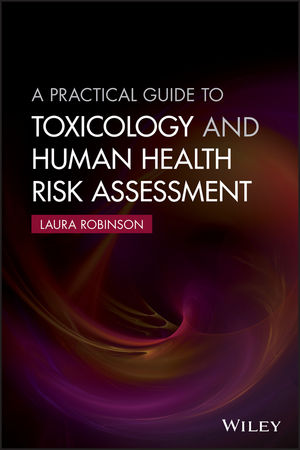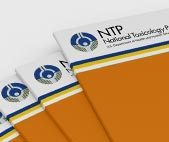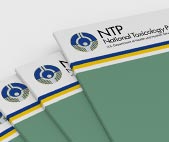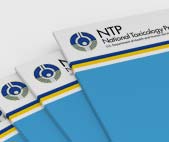Lab safety: Reproductive hazards
Provides chemical safety information resources and search strategies for students, faculty, and staff working in a lab.
Reproductive and developmental hazards resources
Reproductive and developmental hazards - Start here
- California Proposition 65 List
 "The list contains a wide range of naturally occurring and synthetic chemicals that are known to cause cancer or birth defects or other reproductive harm. These chemicals include additives or ingredients in pesticides, common household products, food, drugs, dyes, or solvents. Listed chemicals may also be used in manufacturing and construction, or they may be byproducts of chemical processes, such as motor vehicle exhaust." (website description)
"The list contains a wide range of naturally occurring and synthetic chemicals that are known to cause cancer or birth defects or other reproductive harm. These chemicals include additives or ingredients in pesticides, common household products, food, drugs, dyes, or solvents. Listed chemicals may also be used in manufacturing and construction, or they may be byproducts of chemical processes, such as motor vehicle exhaust." (website description)
Current Diagnosis & Treatment: Occupational & Environmental Medicine, 6th edition by Joseph LaDou; Robert Harrison
ISBN: 9781260143430Publication Date: 2021-06-23This comprehensive guide builds your understanding of OEM complexities while providing practical information you need for daily care. Concise yet fully comprehensive, CURRENT Diagnosis & Treatment: Occupational & Environmental Medicine, Sixth Edition is the definitive guide to diagnosing, treating, preventing, and remediating common occupational and environmental illnesses. It provides valuable insights into the role of non-physician health and safety professionals, how they interact with physicians, and the value of team collaboration. Providing quick access to critical information, this thorough guide also covers important legal aspects of occupational and environmental medicine. Extra materials for your day-to-day needs include workers comp specs by state/region, physical exam guidelines (photos, videos), pain scales, OSHA/NIOSH questionnaires, screening questions, AOEC/NAICS/SOC information, blood/urine toxicology values, pain management guidelines, and more.Patty's toxicology, 5th edition
ISBN: 0471125474Publication Date: 2001-2015“Patty's Toxicology is a major reference work that contains toxicological information on a large number of industrial chemicals that pose potential health hazards. This work presents logical groupings of comprehensive toxicological data for industrial compounds, including CAS numbers, physical and chemical properties, exposure limits, and biological tolerance values for occupational exposures, making it essential for toxicologists and industrial hygienists. Patty's Toxicology covers: Introduction to the field; Metal compounds; Organic halogenated hydrocarbons and organic nitrogen compounds; Organic halogenated hydrocarbons and aliphatic carboxylic acid compounds; Ketones, alcohols, and ester compounds; Epoxy, glycol ethers, and synthetic polymer compounds; and Specialized topics in toxicological assessment. CAS numbers, CAS RN and chemical name searches have been updated for all articles within Patty's Toxicology.” (publisher’s description)Reproductive and Developmental Toxicology by Ramesh C. Gupta (Editor)
ISBN: 9780128042397Publication Date: 2017"Reproductive and Developmental Toxicology, Second Edition, is a comprehensive and authoritative resource that provides the latest literature on this complex subject with a primary focus on three core components-parent, placenta, and fetus-and the continuous changes that occur in each. Enriched with relevant references describing every aspect of reproductive toxicology, this revised and updated resource addresses the totality of the subject, discussing a broad range of topics, including nanoparticles and radiation, gases and solvents, smoking, alcohol and drug abuse, and metals, amongst others. With a special focus on placental toxicity, this book is the only available reference to connect the three key risk stages, also including discussions on reproductive and developmental toxicity in domestic animals, fish, and wildlife." (publisher's description)
Reproductive and developmental hazards - Encyclopedias and handbooks
Comprehensive Toxicology, 3rd edition by Charlene McQueen (Editor-In-Chief)
ISBN: 9780081006122Publication Date: 2018"Comprehensive Toxicology, Third Edition, discusses chemical effects on biological systems, with a focus on understanding the mechanisms by which chemicals induce adverse health effects. Organized by organ system, this comprehensive reference work addresses the toxicological effects of chemicals on the immune system, the hematopoietic system, cardiovascular system, respiratory system, hepatic toxicology, renal toxicology, gastrointestinal toxicology, reproductive and endocrine toxicology, neuro and behavioral toxicology, developmental toxicology and carcinogenesis, also including critical sections that cover the general principles of toxicology, cellular and molecular toxicology, biotransformation and toxicology testing and evaluation." (publisher's description)The Dictionary of Substances and Their Effects (DOSE) by S. D. Gangolli (Editor)
ISBN: 0854048030Publication Date: 1999"This new edition of The Dictionary and Substances and their Effects (DOSE) supersedes the renowned 1st edition, and offers the benefit of free sitewide access to the DOSE searchable web database. The 1st edition has been completely revised, updated and extended with all the latest significant data on the chemicals known to have adverse effects on lifeforms or the environment. The new edition is a must for all those who need easy access to a single source of the latest essential and fully referenced data on chemicals which are known to have significant toxic or environmental effects. The web database is ideal for targeted searches and customised data retrieval. The 2nd edition of DOSE includes new toxicity, environmental and regulatory data from the world's literature, presented in concise summaries. These new data are essential for the accurate assessment of the risks associated with the use and disposal of chemicals. Data on over 100 chemicals new to this edition have been added, including endocrine disruptors, food carcinogens, pesticides and compounds studied by IARC and NTP. All of the 4000 chemicals contained in the 1st edition have been reviewed. New and updated information for these chemicals includes: * occupational exposure limits for 6 countries * recent toxicity and ecotoxicity data * results of new carcinogenicity, mutagenicity and environmental fate studies * the latest regulatory requirements DOSE 2nd edition comprises 7 hardcover volumes covering over 4000 chemicals alphabetically, and includes indexes of substance names and synonyms, molecular formulae, and CAS Registry Numbers; glossaries of medical terms and Latin to English organism names; an abbreviations listing and a comprehensive guide to the types of data and their origin. Free sitewide access to the DOSE web database is included in the purchase price." (publisher's description)Sittig's Handbook of Toxic and Hazardous Chemicals and Carcinogens by Richard P. Pohanish
ISBN: 9780323389686Publication Date: 2017"Sittig's Handbook of Toxic and Hazardous Chemicals and Carcinogens, Seventh Edition, has proven to be a reliable, accessible, must-have reference on hazardous materials for over thirty years. This updated and revised seventh edition is the most comprehensive listing of the hazardous chemicals commonly used, transported, and regulated in industry and the workplace. Information is the most vital resource anyone can have when dealing with potential hazardous substance accidents, spillages, fires, or acts of terror. It is also essential for the safe day-to-day operation of chemical processes and environmental protection. Sittig's Handbook provides extensive data for over 2,200 chemicals in a uniform format, enabling fast and accurate decisions in any situation. The chemicals are presented alphabetically and classified as a carcinogen, hazardous substance, hazardous waste, or toxic pollutant. This new edition contains expanded and reviewed information for each chemical listed (including chemicals classified as WMD) and has been updated to keep pace with world events, standards, and regulations." (publisher's description)
Reproductive and developmental hazards - Databases
- Canadian Centre for Occupational Health and Safety. Web information servicePresents a collection of databases related to occupational health and safety. Material Safety Data Sheets (MSDS) provide physical and safety data on chemicals manufactured or sold in North America. CHEMINFO provides safety information for important workplace chemicals. CHEMpendium compiles chemical hazard information from a variety of sources. Registry of Toxic Effects of Chemical Substances (RTECS) contains citations to the literature for thousands of chemical substances. OSH References is an index to journal articles and other literature related to occupational health and safety. Canadian enviroOSH indexes Canadian national, provincial, and territorial environmental and occupational safety legislation and standards. Several additional free resources are available through the CCOHS Web Information Service.
- DART (Developmental and Reproductive Toxicology Database)"Now part of PubMed, DART covers teratology and other aspects of developmental and reproductive toxicology. DART references to literature published since the early 1900s. As the MEDLINE collection expanded, it was decided not to use additional resources to add citations that were now available via the selection of PubMed citations on developmental and reproductive toxicology. We use a search profile to do this. Some meeting abstracts and non-Medline literature were historically included in DART, but new citations come only from PubMed." (from DART Fact Sheet)
 Laboratory Chemical Safety Summary (LCSS) by National Center for Biotechnology Information, U.S. National Library of MedicinePublication Date: 2015-SEARCH TIP: Search chemical name in PubChem. View details. The identification section includes a link to the Laboratory Chemical Safety Summary Datasheet.
Laboratory Chemical Safety Summary (LCSS) by National Center for Biotechnology Information, U.S. National Library of MedicinePublication Date: 2015-SEARCH TIP: Search chemical name in PubChem. View details. The identification section includes a link to the Laboratory Chemical Safety Summary Datasheet.
The Laboratory Chemical Safety Summary (LCSS) is based on the format described by the National Research Council in the publication "Prudent Practices in the Laboratory: Handling and Management of Chemical Hazards" (2011). The LCSS in PubChem contains pertinent chemical hazard and safety information. It is available when a GHS Classification (Globally Harmonized System of Classification and Labeling of Chemicals) is present for a given PubChem Compound record. The GHS classification codes and hazard pictograms are summarized in the PubChem GHS page. The LCSS data from PubChem is freely available, and "can be downloaded as a data stream in bulk or on-demand from the PubChem website."
- PubMedPubMed is an index to over 5,000 journals in medicine, nursing, dentistry, veterinary medicine, the health care system, and the preclinical sciences, including both basic biomedical sciences and clinical practice. Medical Subject Headings (MeSH) provide a powerful tool for searching topics. Updated daily, covers 1946--present, with some older material.
- SciFinderSciFinder is the most comprehensive database for coverage of chemistry & chemical engineering. It has the world's largest collection of organic and inorganic substance information. The web version of SciFinder provides integrated access to CAPlus, CAS Registry, CASREACT, CHEMLIST, and CHEMCATS which are produced by Chemical Abstracts Service, and to MEDLINE which is produced by the U.S. National Library of Medicine. Sources covered in SciFinder include 10,000 journals, patents from 61 patent authorities, book chapters, conference proceedings, dissertations, evaluated reference works, technical reports, as well as book reviews and biographical information.
Reproductive and developmental hazards - Selected texts
Catalog of Teratogenic Agents, 12th edition by Thomas H. Shepard; Ronald J. Lemire
ISBN: 9780801887420Publication Date: 2007"The most comprehensive one-volume guide of its kind, this indispensable reference work presents information on teratogenic agents in a ready-reference format. The revised and expanded twelfth edition contains approximately three hundred new entries - including one hundred newly listed agents and developmental genes that cause syndromes or congenital defects. Also included are overviews of recent literature on clinical and experimental teratology, including important Japanese literature not easily available to English-language researchers. As in previous editions, this volume emphasizes human data and covers pharmaceuticals, chemicals, environmental pollutants, food additives, household products, and viruses." (publisher's description)Developmental and Reproductive Toxicology : a practical approach, 3rd edition by Ronald D. Hood (Editor)
ISBN: 9781841848211Publication Date: 2016"The purpose of this third edition of Developmental and Reproductive Toxicology is to provide a practical guide to developmental and reproductive toxicology in a regulatory environment. In addition to a comprehensive update of current chapters, the third edition been revised to reflect recent changes in the field. It contains new chapters that reflect emerging topics of interest, including testing of biologics (including vaccines), nonhuman primates as nonclinical models, developmental immunotoxicity testing, in vitro assays (such as use of zebrafish and stem cells, as well as high throughput screening), in silico systems modelling, evaluating mechanisms of reproductive toxicity, in-depth coverage of neurobehavioral testing, and testing under the EU's REACH regulations, as well as updated chapters on nonclinical juvenile toxicity testing, endocrine disruptor screening, and on functional and computational genomics. The study of hazard and risk associated with exposure to toxicants during prenatal development has been expanded in recent years to include effects on development until the time of puberty. Concern over the adverse effects of chemical or physical agents on the reproductive processes of both sexes has increased, and progress has been made in identifying the causes and mechanisms eliciting congenital defects and determining the genetic, epigenetic, and environmental factors involved." (source: Nielsen Book Data) The effects of workplace hazards on female reproductive health by National Institute for Occupational Safety and HealthPublication Date: 1999"Many factors can affect a woman’s reproductive health and her ability to produce healthy children. We know that the health of an unborn child can suffer if a woman fails to eat right, smokes, or drinks alcohol during pregnancy. However, we know very little about the cause of most reproductive health problems such as infertility, miscarriage, and birth defects. We do know that some workplace hazards can affect a woman’s reproductive health, her ability to become pregnant, or the health of her unborn children." (publisher's description)
The effects of workplace hazards on female reproductive health by National Institute for Occupational Safety and HealthPublication Date: 1999"Many factors can affect a woman’s reproductive health and her ability to produce healthy children. We know that the health of an unborn child can suffer if a woman fails to eat right, smokes, or drinks alcohol during pregnancy. However, we know very little about the cause of most reproductive health problems such as infertility, miscarriage, and birth defects. We do know that some workplace hazards can affect a woman’s reproductive health, her ability to become pregnant, or the health of her unborn children." (publisher's description)Evaluating Chemical and Other Agent Exposures for Reproductive and Developmental Toxicity by Subcommittee on Reproductive and Developmental Toxicity, Committee on Toxicology, Board on Environmental Studies and Toxicology, National Research Council.
Publication Date: 2001"The United States Navy has been concerned for some time with protecting its military and civilian personnel from reproductive and developmental hazards in the workplace. As part of its efforts to reduce or eliminate exposure of Naval personnel and their families to reproductive and developmental toxicants, the Navy requested that the National Research Council (NRC) recommend an approach that can be used to evaluate chemicals and physical agents for their potential to cause reproductive and developmental toxicity. The NRC assigned this project to the Committee on Toxicology, which convened the Subcommittee on Reproductive and Developmental Toxicology, to prepare this report. In this report, the subcommittee recommends an approach for evaluating agents for potential reproductive and developmental toxicity and demonstrates how that approach can be used by the Navy." ( publisher's description) See Appendix B: Ascertaining Information on the Reproductive and Developmental Toxicity of Agent Exposures.Metals, Fertility, and Reproductive Toxicity by Mari S. Golub (Editor)
ISBN: 9780415700405Publication Date: 2005"Environmental endocrine disruptors have been at the heart of discussions about chemicals and their effects on fertility, but the focus has been on organic compounds and the role of metals has been largely overlooked - until now. Taking an organ-system-based approach, Metals, Fertility, and Reproductive Toxicity examines the effects of metals found in the everyday environment on fertility rates in humans and animal populations. This volume summarizes and evaluates the literature in the area of metal effects on fertility and reproduction in humans, laboratory animals, and wildlife. International experts have contributed chapters that explore how the ovary, testes, uterine system, and neuroendocrine system, among others, respond to metal exposure. Reviewing both current knowledge and cutting edge data, the chapters focus on either a particular metal or a particular population. A massive amount of data on this subject has been generated, summarized, and reviewed over the years. While there are many books available on metals toxicity and on reproductive toxicity, no current book explores both in the same volume. Culling information from throughout the literature, Metals, Fertility, and Reproductive Toxicity supplies an in-depth look at the role of metals in endocrine disruption and the spectrum of mechanisms involving metals that can influence reproduction." (publisher's description) A Practical Guide to Toxicology and Human Health Risk Assessment by Laura RobinsonISBN: 9781118881880Publication Date: 2018"Providing a practical and accessible guide, A Practical Guide to Toxicology and Human Health Risk Assessment enables readers to quickly build up knowledge and understanding of toxicology and its use in hazard identification, which is a fundamental part of chemical risk assessment. The book also covers current toxicological testing strategies and the use of physicochemical test data in hazard identification and exposure assessment. Examples are provided throughout the book to highlight important issues along with a summary of the key points that have been covered in each of the respective chapters. The book concludes with a listing of online resources on toxicology and risk assessment." (publisher's description)
A Practical Guide to Toxicology and Human Health Risk Assessment by Laura RobinsonISBN: 9781118881880Publication Date: 2018"Providing a practical and accessible guide, A Practical Guide to Toxicology and Human Health Risk Assessment enables readers to quickly build up knowledge and understanding of toxicology and its use in hazard identification, which is a fundamental part of chemical risk assessment. The book also covers current toxicological testing strategies and the use of physicochemical test data in hazard identification and exposure assessment. Examples are provided throughout the book to highlight important issues along with a summary of the key points that have been covered in each of the respective chapters. The book concludes with a listing of online resources on toxicology and risk assessment." (publisher's description)Teratogens : chemicals which cause birth defects, 2nd edition by Vera M. Kolb (Editor)
ISBN: 9781483193229Publication Date: 1993"Teratogens Chemicals Which Cause Birth Defects, 2nd Revised Edition is a collection of papers that discusses the practical aspect of teratogens, particularly regarding information on the teratogenic potential of chemicals. This book describes the principles and mechanism of teratogenesis, including the initiating mechanisms during the subcellular or molecular level and the role of bio-activation in teratogenesis. Investigations have been done on the relationship between spontaneous abortion in women exposed to organic solvents, antineoplastic agents, and chemicals in plastics. Other studies also show that teratogenicity depends in part on enzymatic bio-activation to an embryotoxic reactive intermediate. This text also explains the legal and ethical aspects of fetal protection policies with emphasis on fetal protection. Protection to expecting women extends to pregnant students exposed to teratogenic chemicals in chemistry laboratories. The book explains how and where to get information about the teratogenic potential of chemicals and how to properly handle these chemicals in the laboratory. The book also provides a list from RTECs of toxic chemicals which can cause reproductive effects. This book can prove useful for chemists, pharmacologists, obstetricians, gynecologists, and practitioners of general medicine." (publisher's description)Toxicology and Risk Assessment : a comprehensive introduction by Helmut Greim, Robert Snyder, Editors
ISBN: 9781119135920Publication Date: 2018"Toxicology and Risk Assessment: A Comprehensive Introduction, Second Edition reflects recent advances in science and technology, and provides the scientific background and methodological issues to enable the reader to understand the basic principles in toxicology and to evaluate the health risks of specific exposure scenarios. This book is divided into five sections: Principles in Toxicology, Organ Toxicology, Methods in Toxicology, Regulatory Toxicology, and Specific Toxicity. New chapters recent scientific and technological advances including alternatives to animal testing; genotoxic carcinogens; REACH regulations; nanomaterials; fuels; fragrances; PAHs; and agrochemicals." (publisher's description)
National Toxicology Program (NTP) - Publications
Most publication lists can be filtered by Type "Developmental and Reproductive Toxicity."
- NTP Explanation of Levels of Evidence for Reproductive ToxicityCriteria established by National Toxicology Program in March 2009.
- NTP Explanation of Levels of Evidence for Developmental Toxicity (PDF)Criteria established by National Toxicology Program in March 2009.
- NTP > Publications
 The National Toxicology Program conducts evaluations of substances to assess the evidence that exposure causes adverse health effects. Depending on the assessment goals and the available evidence, these evaluations may result in hazard conclusions. They may also characterize the evidence in state-of-the science documents, scoping reviews, or interactive evidence maps.
The National Toxicology Program conducts evaluations of substances to assess the evidence that exposure causes adverse health effects. Depending on the assessment goals and the available evidence, these evaluations may result in hazard conclusions. They may also characterize the evidence in state-of-the science documents, scoping reviews, or interactive evidence maps. - NTP Developmental & Reproductive Toxicity Reports
 Reports about the potential of agents to affect test animal development and reproduction.
Reports about the potential of agents to affect test animal development and reproduction. - Historical NTP-CERHR (Center for the Evaluation of Risks to Human Reproduction) Monographs"This is a list of historical NTP monographs prepared by the Center for the Evaluation of Risks to Human Reproduction (CERHR). CERHR operated from 1998–2010 and focused on assessments of potential adverse effects of environmental substances on reproduction or development." (website description)
- NTP Study AbstractsThe following list of abstracts represents studies conducted by NTP. Studies conducted before 1985 have not been included in the list. These studies have not been evaluated by the levels of evidence criteria for reproductive or developmental toxicity established by NTP in March 2009.
- Last Updated: Oct 16, 2024 12:21 PM
- URL: https://guides.library.stanford.edu/lab-safety
- Print Page


